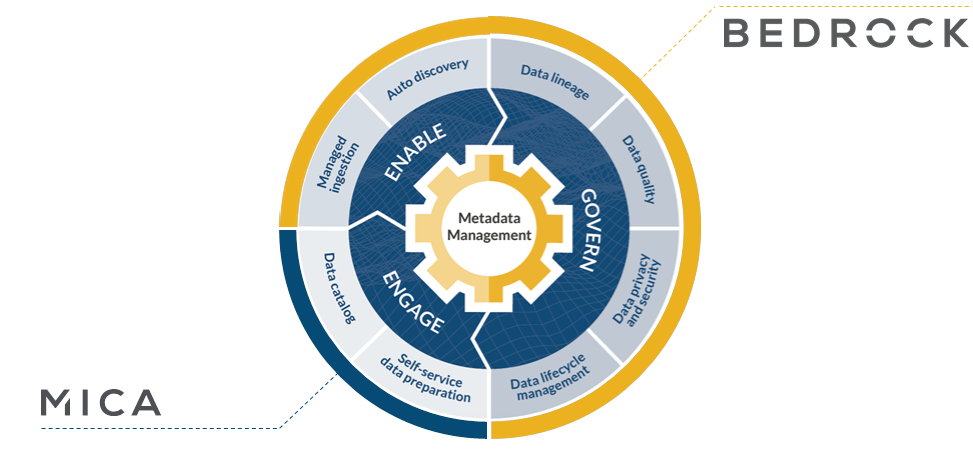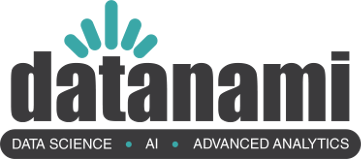

Zaloni today rolled out Data Lake in a Box, a soup-to-nuts offering for getting a fully governed Hadoop cluster up and running in eight weeks or less. The offering includes Hadoop software, data management middleware, and implementation services. “Everything but the hardware,” Zaloni’s VP of marketing says.
While Hadoop clusters are powerful data storage and processing machines, they’re not easy to implement or manage. There are many configurations settings that require skill and experience to get right. And once the cluster is configured, getting the data ingested in a way that it can actually be worked with is not a trivial matter.
It’s not uncommon to hear about six-month Hadoop deployments. In these situations, much of the time spent is spent building and implementing data management processes that ensure the data is governed, discoverable, and accessible to the end-users who will (eventually) be allowed access into the cluster, or at least a part of it.
Zaloni is hoping to shortcut these extended deployments by bringing together all the software and services necessary to get a general-purpose and governed Hadoop cluster up and running in about two months.
“We’re helping companies get fully hydrated in under eight weeks,” says Zaloni vice president Kelly Schupp. “We’re reducing the time and effort it takes by up to 75%, and at the same time we’re providing the kind of visibility and governance support they’re going to need, because, as that data is getting ingested, it’s being tagged and cataloged.”
Data Lake in a Box combines Bedrock, its data lake management offering, and Mica, its self-service user access offering, with its Ingestion Factory software and users choice of Hadoop distribution, including plain vanilla Apache Hadoop or, for an extra fee, the Hadoop distributions from Cloudera or MapR.
It’s all about quickly creating a fully governed Hadoop cluster that will serve the needs of the business for many years, says Tony Fisher, Zaloni’s senior VP of strategy and business development.
While eight weeks is a big improvement over six months, it’s still not as quick as some offerings that promise to create ready-to-use Hadoop clusters in a matter of days. The key difference there is quality, says Tony Fisher, Zaloni’s senior VP of strategy and business development.
“There’s a big difference between creating a data lake and a data swamp,” Fisher says “You can ingest anything into a data lake in three days. But the fact of the matter is it doesn’t’ have the data quality, the rigor, or the types of things you’re going to need to do productive analytics on it.”
The offering doesn’t include analytics; it’s up to the user to bring those. That’s fine because most customers these days are developing their own analytics in Python or R using data science notebooks, or hooking Excel, Tableau, or Qlik BI tools to visualize and manipulate data.
Companies that adopt Hadoop are finding that it takes more time and effort than they expected to get good results out of Hadoop, says Nik Rouda, an analyst with Enterprise Strategy Group.
“Operationalizing data lakes has proven much harder and taken much longer than most enterprises would want,” he states in Zaloni’s press release. “This process typically involves manually cobbling together a large number of disparate tools, and then trying to support that mess going forwards. Zaloni integrates all the essential capabilities and best practices and packages them up, delivering quality and productivity right out of the box.”
Zaloni says it’s getting traction with Bedrock and Mica, which come together in a single offering for the first time with the new Data Lake in a Box offering. The company says bookings and revenues grew by 3x from 2015 to 2016, and it’s hoping the new offering continues that momentum.
One of the Durham, North Carolina company’s customers, Emirates Integrated Telecommunications Company (also known simply as du), will be in San Jose, California this week to present at the Strata + Hadoop World show. The company will discuss its experience with Zaloni’s products. Other prominent Zaloni customers include SCL Health, CDS Global, and Pechanga Resort and Casino.
Related Items:
Dr. Elephant Steps Up to Cure Hadoop Cluster Pains
IBM Taps Zaloni to Ride Herd on Hadoop
April 26, 2024
- Google Announces $75M AI Opportunity Fund and New Course to Skill One Million Americans
- Elastic Reports 8x Speed and 32x Efficiency Gains for Elasticsearch and Lucene Vector Database
- Gartner Identifies the Top Trends in Data and Analytics for 2024
- Satori and Collibra Accelerate AI Readiness Through Unified Data Management
- Argonne’s New AI Application Reduces Data Processing Time by 100x in X-ray Studies
April 25, 2024
- Salesforce Unveils Zero Copy Partner Network, Offering New Open Data Lake Access via Apache Iceberg
- Dataiku Enables Generative AI-Powered Chat Across the Enterprise
- IBM Transforms the Storage Ownership Experience with IBM Storage Assurance
- Cleanlab Launches New Solution to Detect AI Hallucinations in Language Models
- University of Maryland’s Smith School Launches New Center for AI in Business
- SAS Advances Public Health Research with New Analytics Tools on NIH Researcher Workbench
- NVIDIA to Acquire GPU Orchestration Software Provider Run:ai
April 24, 2024
- AtScale Introduces Developer Community Edition for Semantic Modeling
- Domopalooza 2024 Sets a High Bar for AI in Business Intelligence and Analytics
- BigID Highlights Crucial Security Measures for Generative AI in Latest Industry Report
- Moveworks Showcases the Power of Its Next-Gen Copilot at Moveworks.global 2024
- AtScale Announces Next-Gen Product Innovations to Foster Data-Driven Industry-Wide Collaboration
- New Snorkel Flow Release Empowers Enterprises to Harness Their Data for Custom AI Solutions
- Snowflake Launches Arctic: The Most Open, Enterprise-Grade Large Language Model
- Lenovo Advances Hybrid AI Innovation to Meet the Demands of the Most Compute Intensive Workloads
Most Read Features
Sorry. No data so far.
Most Read News In Brief
Sorry. No data so far.
Most Read This Just In
Sorry. No data so far.
Sponsored Partner Content
-
Get your Data AI Ready – Celebrate One Year of Deep Dish Data Virtual Series!
-
Supercharge Your Data Lake with Spark 3.3
-
Learn How to Build a Custom Chatbot Using a RAG Workflow in Minutes [Hands-on Demo]
-
Overcome ETL Bottlenecks with Metadata-driven Integration for the AI Era [Free Guide]
-
Gartner® Hype Cycle™ for Analytics and Business Intelligence 2023
-
The Art of Mastering Data Quality for AI and Analytics
Sponsored Whitepapers
Contributors
Featured Events
-
AI & Big Data Expo North America 2024
 June 5 - June 6Santa Clara CA United States
June 5 - June 6Santa Clara CA United States -
CDAO Canada Public Sector 2024
 June 18 - June 19
June 18 - June 19 -
AI Hardware & Edge AI Summit Europe
 June 18 - June 19London United Kingdom
June 18 - June 19London United Kingdom -
AI Hardware & Edge AI Summit 2024
 September 10 - September 12San Jose CA United States
September 10 - September 12San Jose CA United States -
CDAO Government 2024
 September 18 - September 19Washington DC United States
September 18 - September 19Washington DC United States


























